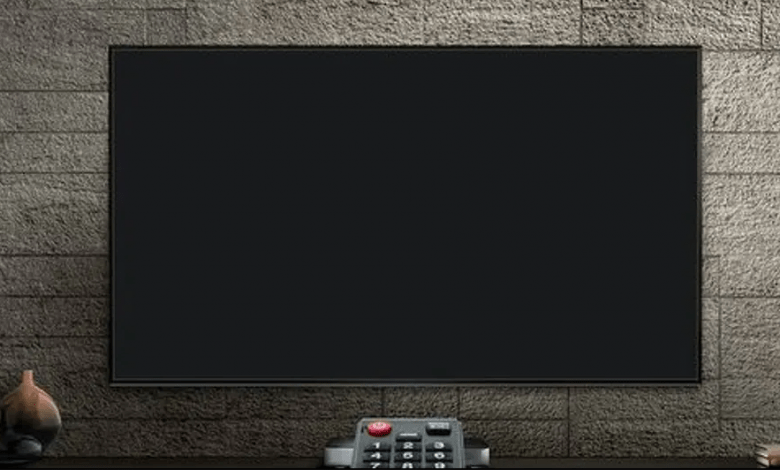
Why Can’t You Use a TV as a Monitor?
Televisions and computer monitors are comparable in that the screens are driven by the same technology. A TV can normally be used with a computer, but they aren’t the same as monitors because they are designed for a different market.
Differences in Connections
If your TV or monitor was produced in the recent decade, it will take HDMI input. HDMI is the industry standard for video transmissions, and you’ll find it on practically any device that outputs video to a computer, including Rokus and game consoles. Technically, either a TV or a monitor will suffice if all you need is a screen to hook things into.
Other connections, such as DisplayPort, are frequently available on monitors to allow greater resolutions and refresh rates. Multiple HDMI ports are common on TVs, allowing you to connect all of your devices to one screen, whereas monitors are often designed to only use one device at a time.
Audio is commonly sent over HDMI by devices like gaming consoles, but monitors rarely contain speakers, and if they do, they are rarely good ones. At your workstation, you’re normally required to use headphones or have desktop speakers. Almost all televisions, however, will feature speakers. The high-end models take pride in having excellent ones, as they serve as the focal point of your living area.
TVs Are Much Larger
The size of the screen is the most evident change. Most televisions have a screen size of 40 inches or greater, while most desktop monitors have a screen size of 24-27 inches. Because the TV is designed to be visible from across the room, it must be larger to take up the same amount of space in your vision.
This may not be a problem for you; some people prefer a larger display to a series of smaller ones. So while the size isn’t a deal-breaker, the resolution is–if your TV is a 40-inch panel but only has a 1080p resolution, it will appear grainy when viewed up close on your desk, yet appearing OK from across the room. Consider acquiring a 4K panel if you’re going to use a huge TV as your primary computer monitor.
The inverse is also true: you wouldn’t want to watch TV in your living room on a small computer monitor. Although it’s possible, most mid-sized 1080p TVs are around the same price as a comparable desktop monitor.
Monitors Are Made For Interactivity

The content you consume on televisions is almost all prerecorded, whereas, on monitors, you’ll be continuously interacting with your desktop. They’re designed with that in mind, with TVs focusing on improved picture quality for movies and shows at the expense of processing time and input lag.
To realize why this matters, it’s necessary to understand the fundamentals of how most TVs and monitors work. Devices (like your computer or cable box) deliver photos to the display numerous times per second with both TVs and monitors. The image is processed by the display’s circuitry, which causes it to be displayed for a short time. This is referred to as the input lag of the panel.
After the image has been processed, it is sent to the LCD panel (or whatever else your device uses). Because the pixels do not transition quickly, the panel takes time to render the image. If you slowed it down, the TV would gradually fade from one image to the next. The panel’s response time, which is commonly confused with input latency, is what we’re talking about.
Because all of the videos are prerecorded and you aren’t providing any input, input lag isn’t a big deal on TVs. Response time isn’t as important because you’ll nearly always be watching the video at 24 or 30 frames per second, giving the manufacturer a lot more leeway to “save money” on something you’ll never notice.
When using it on a computer, however, you may notice it more. When viewing a 60 FPS game from a desktop, a TV with a fast response time may appear fuzzy and leave ghosting artifacts since you spend more time every frame in the in-between state. These artifacts resemble the cursor trails in Windows, but they appear for everything you move. Furthermore, if your input lag is high, you may notice a delay between moving your mouse and seeing it move on the screen, which can be confusing. Input lag and response time affect your experience even if you aren’t playing games.
These aren’t, however, clear-cut distinctions. Fast-moving content isn’t a problem for all TVs, and not all monitors are always better. Many TVs designed for console gaming now include a “game mode” that disables all processing and speeds up the panel’s response time to match that of many monitors. It all depends on which model you buy, but specs like response time are frequently misinterpreted (or downright marketing lies) on both sides, and input lag is rarely tested or acknowledged. To gain accurate ratings, you’ll frequently need to consult third-party reviewers.
TVs Are Made For Tuning Into TV

Most TVs will have computerized tuners you can use to tune into over-the-air TV with a radio wire or even, maybe, satellite TV with a coaxial link. The tuner is the thing that disentangles the computerized signal sent over the air or link. Indeed, it can’t legitimately be promoted as a “TV” in the US without an advanced TV tuner.
On the off chance that you have a link membership, you probably have a set-top box that likewise capacities as a tuner, so a few producers are deciding to discard the tuner to set aside some cash. On the off chance that it doesn’t have one, it’s typically promoted as a “Home Theater Display” or “Enormous Format Display” and not a “television.” These will in any case work fine when connected to a link box, yet will not have the option to get a link without one. What’s more, you can’t associate a radio wire straightforwardly with them to watch OTA TV.
Screens won’t ever have a tuner, however on the off chance that you have a link box with an HDMI yield—or even an OTA box you can plug a receiving wire into—you can plug that into a screen to watch digital TV. Remember that you’ll in any case need speakers if your screen doesn’t have them.
Finally, if your TV isn’t too old and still has the correct connectors, you can technically connect it to your computer and utilize it without any problems. However, your mileage may vary significantly based on the manufacturer and the actual experience of using it.
If you want to use a monitor as a TV, you won’t be able to watch TV without an extra box, but you can use an Apple TV or Roku to watch Netflix if you don’t mind the reduced screen size or lack of adequate speakers.



